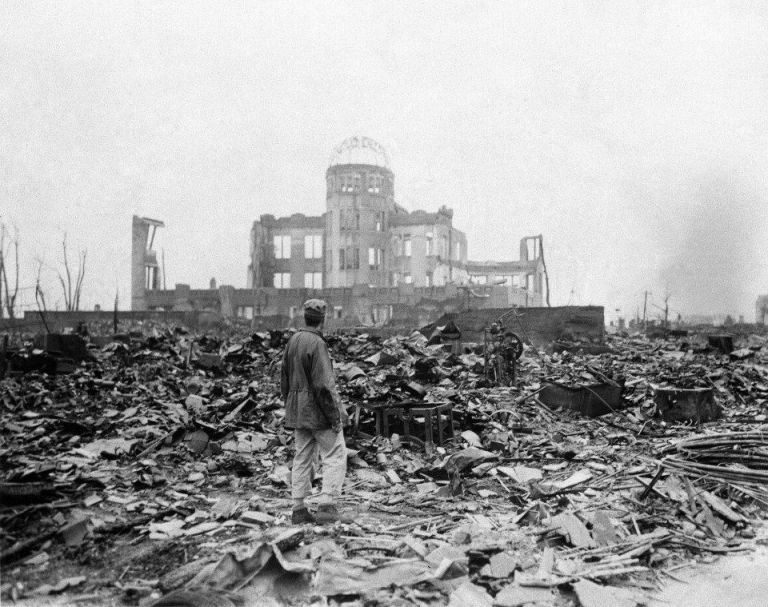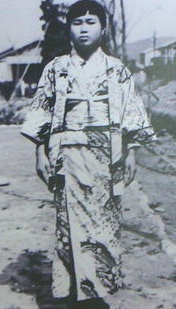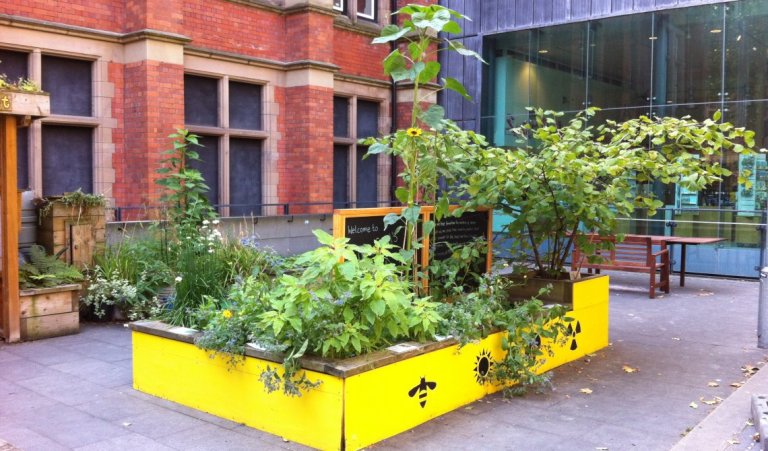On the 26 April 1986 an explosion and fire at the No. 4 reactor of Chernobyl Nuclear Power Plant in Ukraine resulted in a nuclear meltdown sending radioactivity into the atmosphere. The radiation fallout spread throughout Europe. The Chernobyl disaster is still considered the largest and most severe nuclear accident in history.
More than 30 years on, many communities in Belarus and Ukraine continue to struggle with the medical, environmental and economic consequences of the Chernobyl disaster. The UN have designated 26 April as International Chernobyl Disaster Remembrance Day.
Today’s Story from the Museum Floor brings the story back to Manchester, where the ‘nuclear age’ began.
 The damaged unit 4 reactor at Chernobyl (Source: United Nations)
The damaged unit 4 reactor at Chernobyl (Source: United Nations)
Manchester and the start of the ‘Nuclear Age’
Although Geneva has arguably become the home of particle physics, not least because of CERN’s Large Hadron Collider, it was here in Manchester that the atom was split for the first time. There are a few discoveries in science that can be said to have changed the world and Ernest Rutherford’s ‘splitting of the atom’ is certainly one of them.
On Tuesday, 7 March 1911, during a meeting of the Manchester Literary and Philosophical Society, Professor Ernest Rutherford presented a theory that was to herald the start of the ‘nuclear age’.
Manchester Museum’s Nuclear Neighbours: Ernest Rutherford’s University of Manchester laboratory where he famously split the atom is on Bridgeford Street, now known as the Rutherford Building, adjoins Manchester Museum, and we even share a basement! Rutherford’s blue plaque (Source), Ernest Rutherford with Hans Geiger in the laboratory (Source),
It was through his now famous ‘gold foil’ experiment that Rutherford was able to theorise the nature of the inner structure of an atom. That the mass of an atom was concentrated in the slightly charged nucleus, a particle 1,000 times smaller than the atom itself, was a significant contribution to physics. Using this model, he planned experiments to demonstrate that the nucleus itself had still smaller components.
The University of Manchester’s Prof. Brian Cox explains more on this short video.
“When we have found how the nucleus of atoms is built up we shall have found the greatest secret of all — except life. We shall have found the basis of everything — of the earth we walk on, of the air we breathe, of the sunshine, of our physical body itself, of everything in the world, however great or however small – except life.”
– Ernest Rutherford
In 1917, following a brief interruption of his work at the outbreak of war, Rutherford, discovered that by the impact of particles coming from a radioactive source, the nucleus of elements such as nitrogen could be ‘disintegrated’, in turn emitting fast moving protons. This was the first ever artificially-induced nuclear reaction, a breakthrough that would lead ultimately to nuclear power and the atomic bombs that devastated Hiroshima and Nagasaki in the Second World War.
Rutherford had not only created a new scientific discipline, nuclear physics, but also changed the world forever.
 Hiroshima, September 1945. One month after the bomb was dropped. Photo: Stanley Troutman/AP (Source)
Hiroshima, September 1945. One month after the bomb was dropped. Photo: Stanley Troutman/AP (Source)
The Crane and the Little Boy
On 6 August 1945, the impact of the nuclear age was realised when the United States dropped its first atomic bomb.
War had ended in Europe, and U.S. President Harry Truman had called for Japan’s surrender, with the threat of utter destruction if this was not to happen. On 6 August 1945, the uranium-based bomb, known as the “Little Boy“, was dropped on the Japanese city of Hiroshima. With 13 kilotons of force, the explosion levelled the city, and took 80,000 lives instantly. Thousands more would lose their lives in the following weeks, months and years from radiation exposure.
 Peace case, Living Worlds, Manchester Museum
Peace case, Living Worlds, Manchester Museum
The centrepiece of the ‘Peace’ case on our Living Worlds gallery at Manchester Museum is a fragment of warped glass and metal from the atomic blast in Hiroshima. The case also contains hundreds of paper cranes and a taxidermy crane.
Sadako Sasaki was two years old when the bomb was dropped at Hiroshima, she was at her home, about one mile away from ground zero, and she was blown through a window, but escaped seemingly with no injuries. At 9 years old, she developed leukemia.
Cranes are large birds that feature in the legends of many cultures. In China and Japan they symbolise long life and good luck. There is a story that if you fold a thousand origami paper cranes your wish will come true. After her father had told her this story, Sadako started folding…
 Sadako Sasaki, March 1955
Sadako Sasaki, March 1955
Sadako’s friends and classmates helped her, and Sadako said of the cranes ‘I will write peace on your wings and you will fly all over the world.”
Aged just twelve, Sadako Sasaki died on the morning of October 25, 1955.
Today, paper cranes are an international symbol of peace. And standing alongside Mayors for Peace, Manchester Museum is very proud to host the Manchester commemoration service for the anniversary of the Hiroshima and Nagasaki atomic bombings every year in August.
The Remediation
In 2015 the nuclear story came full circle, back to Bridgeford Street, where it all started. James’s Brady’s ‘Rutherford’s Garden’ was a living exhibition, in the Museum’s allotment. This was an exploration of the tangible interrelationships between Rutherford ‘splitting the atom’ in 1917 and the bittersweet legacy of nuclear physics, Manchester Museum’s Botany collection, and the applied science of Phytoremediation.

Mapping the tangible interrelationships. A mind map in ‘Rutherford’s Garden’. (Source)
This was an interdisciplinary research project in which James Brady occupied the museum as Artist in Residence, and created a ‘remediation garden’, as well as initiating a ‘nuclear debate’ with the public.
 If physicist, Ernest Rutherford was alive today, would he have a garden, and what would he grow? ‘Rutherford’s Garden’ in the courtyard space between the Rutherford Building (left) and Manchester Museum (right). Photo: James Brady (Source)
If physicist, Ernest Rutherford was alive today, would he have a garden, and what would he grow? ‘Rutherford’s Garden’ in the courtyard space between the Rutherford Building (left) and Manchester Museum (right). Photo: James Brady (Source)
There are some plants and fungi that can survive and grow in contaminated and water, and ones that are able to absorb toxic chemicals, effectively cleaning or ‘remediating’ it. This biological process is known as Phytoremediation (with plants) and Mycoremediation (with fungi) is a new, emerging science at the University of Manchester.
Fang from Manchester Museum’s Visitor Team recently explored the ‘bio-remediation’ potential of Borage, find out more in her blog post, Borage – A Star of Nature.
The sunflower has become a symbol of hope following nuclear fallout in Japan and at Chernobyl. Sunflowers were grown around Chernobyl after the nuclear reactor meltdown in 1986 because they are effective at absorbing radioactive chemicals (particularly uranium and caesium) out of water. The removal of theses toxins from the water means that they cannot get into food chains.
 A sunflower from Chernobyl, on display on the third floor at Manchester Museum.
A sunflower from Chernobyl, on display on the third floor at Manchester Museum.
Hope among the ruins
Following the disaster at Chernobyl, an area with a radius of 30 km was permanently evacuated. The area is desolate and bleak. It is peppered with ghost towns and the decaying fragments of lives abandoned. This whole area is simply known as the Chernobyl Exclusion Zone.
But wildlife is thriving in the Exclusion Zone.
Chiara, Luke and Michelle
Find out more:
Exploring the Ghost Towns of Chernobyl
Ernest Rutherford Discovers the Nucleus
The Ernest beginnings of particle physics
Rutherford: splitting the atom
International Chernobyl Disaster Remembrance Day 26 April
A single jawbone has revealed just how much radiation Hiroshima bomb victims absorbed
Scientists are using sunflowers to clean up radiation


One thought on “Rutherford – A Bittersweet Legacy”